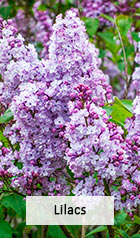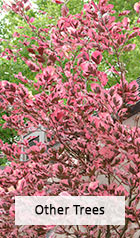- Fall Preview
- Perennials
Close X
Reliable color year after year.
- Bulbs
Close X
Fill your summer with blooms.
- Clematis & Vines
Close X
Provide ambiance and romance.
- Shrubs
Close X
Habitat, color & design possibilities.
- Trees
Close X
A gift for the next generation.
- Patio Orchard
- Fruits
- Tools & Décor
Close X
The right tools make gardening a pleasure.
- Spring Clearance
- Gardening Resources
Close X
Tips and tricks for easy, beautiful gardens.
Begonia Bulbs
Versatile, long-flowering summer plants with showy blooms!

Begonia plants are loved by gardeners the world over for their dense, showy flowers in bright and beautiful colors. Some begonia bulbs prefer shade while others can grow in full sun, making them a versatile choice for gardeners who are looking for big impact in an easy-to-grow plant. Find frilly red begonia flowers, bold yellow, and much more at Spring Hill Nurseries.
When should I plant begonia bulbs?
Begonia bulbs, whether planted for the first time or lifted and replanted in spring, should be planted after the year's final frost date. However, these perennials are relatively slow growers, so late planting can limit their bloom time. If you'd prefer getting a head start on your begonias, start them indoors and transfer them to their growing location after the last frost date.
Do begonia plants come back every year?
Are begonia plants annuals or perennials? Wax begonias, or Semperflorens varieties, are annuals and will work in your garden for just one year. Hardy, tuberous begonias are perennials, but they do require lifting in most zones. Begonias like these are only truly hardy in southern growing zones, 8 through 10. In every other part of the United States, these flowers require lifting in the winter and replanting in the spring.
How long does it take for begonia bulbs to grow?
Begonia bulbs have a long germination time, which is a great reason to start them indoors before setting them out in spring.
When do begonias bloom?
Typically, these plants take between six and eight weeks to sprout, and another six to eight weeks to flower. Since they need to be kept in warmed soil and planted after the last frost date, many gardeners prefer to start begonias indoors to enjoy them in the summer months.
Starting begonias indoors
Start begonias indoors eight to twelve weeks before the last frost. To "wake up" your begonias, set the tubers, without soil, in a warm spot with bright, indirect light. The first sprouts from the tubers should appear within two or three weeks. After the tubers have sprouted, plant them in small pots-three-inch pots do the trick nicely-and continue to keep them in a warm spot. To increase humidity, you may try covering the pots with loose, clear plastic as the sprouts start. Keep watering regularly, but let the first inch or two of soil dry out between waterings. After the last frost date, when the soil is reliably over 60 degrees fahrenheit, go ahead and plant your begonias outdoors.
Can I save my begonias for next year?
Can you rescue begonias in the fall to be replanted in the spring? Happily, the answer is yes. Begonias can be saved in one of two ways-overwintering in containers, or lifting and storing.
Lifting Begonias
Zones 3 through 8 are "lift zones" for begonias, meaning that they can be lifted in the fall and re-planted in the spring. Wait until after the foliage has died back to dig up your begonias. Lift the bulbs carefully using a spade or garden fork. Cut back the foliage, leaving a little soil on the fibrous roots that formed through the growing season. Then, cure your tubers by allowing them to rest in a cool, dry location out of direct sunlight, setting them out on layers of paper or tissue for about one week. Once they're cured, the tubers can be stored in layers of paper in a cool, dark place or refrigerator. They can be re-planted in spring.Storing Begonias in Containers
Begonias can be brought indoors in their pots, making them excellent container plants. If they're planted in the garden, they can be lifted and stored once the foliage has faded, or after the autumn's first light frost.
Begonia tubers can be overwintered right in their pots, as houseplants, or placed in a cool and dark area to go dormant. If you want to keep your begonias blooming all winter, water them regularly and provide humidity through a humidifier or pebble tray to avoid "crispy" edges. However, wintering as a houseplant isn't for every plant or for every home, as begonias require nearly a good amount of indirect sunlight. You can also set your container-planted begonias in a cool, dark place such as a garage or basement, and allow the bulbs to go dormant.
Are begonia bulbs hard to grow?
Begonias are not hard to grow, but they do require lifting in most parts of the U.S. Lifting begonias in fall, curing and storing them, starting them indoors, and setting them outside in spring adds several tasks to the gardening chore list-but we feel they're worth it. Begonias offer a tropical look that can't be compared to any other flower, and incredible foliage to match.
Once you've set your begonias for the spring, they typically do not require special care until fall. However, here are a few tricks to make begonias easier to grow:
- Use a balanced fertilizer (such as a 10-10-10 or 20-20-20 formula) on your in-ground begonias once per month during the blooming season.
- For potted plants, apply a general-purpose slow-release fertilizer at the time of potting and liquid fertilizer at half-strength every two to three weeks during the growing period.
- Deadhead faded blooms to encourage new stems and flowers, especially on double begonia varieties.
- Soil for your begonias should remain moist, but not too wet. Water container begonias as soon as the top inch of soil dries, and consider using a soaker hose to regularly water begonias in the garden.
- You can winter your begonias right in their pots, eliminating time spent lifting. Simply bring the pots indoors, keeping them in a cool, dry location until about 12 weeks before the last frost. At this time, bring them into a warm, sunny spot, allowing them to begin sprouting before putting them back out in the garden.
With the right care, begonias will come back year after year to dazzle and delight.
Do begonias spread?
Fans of hanging baskets know that some varieties of begonias can grow trailing stems of six feet or more, and bushy begonias tend to grow wide. But, do begonias reproduce and spread year over year?Begonia roots are close to the surface of the soil and will spread easily. Begonia stems and leaves will also easily root into the soil. If the plants become overcrowded, they tend to produce more foliage than flowers, so you may wish to divide them every few seasons. Simply pull up the tubers and cut them into smaller pieces. Be sure that each piece has at least one eye, or bud.

































